Audi 2012 Annual Report Download - page 102
Download and view the complete annual report
Please find page 102 of the 2012 Audi annual report below. You can navigate through the pages in the report by either clicking on the pages listed below, or by using the keyword search tool below to find specific information within the annual report.-
 1
1 -
 2
2 -
 3
3 -
 4
4 -
 5
5 -
 6
6 -
 7
7 -
 8
8 -
 9
9 -
 10
10 -
 11
11 -
 12
12 -
 13
13 -
 14
14 -
 15
15 -
 16
16 -
 17
17 -
 18
18 -
 19
19 -
 20
20 -
 21
21 -
 22
22 -
 23
23 -
 24
24 -
 25
25 -
 26
26 -
 27
27 -
 28
28 -
 29
29 -
 30
30 -
 31
31 -
 32
32 -
 33
33 -
 34
34 -
 35
35 -
 36
36 -
 37
37 -
 38
38 -
 39
39 -
 40
40 -
 41
41 -
 42
42 -
 43
43 -
 44
44 -
 45
45 -
 46
46 -
 47
47 -
 48
48 -
 49
49 -
 50
50 -
 51
51 -
 52
52 -
 53
53 -
 54
54 -
 55
55 -
 56
56 -
 57
57 -
 58
58 -
 59
59 -
 60
60 -
 61
61 -
 62
62 -
 63
63 -
 64
64 -
 65
65 -
 66
66 -
 67
67 -
 68
68 -
 69
69 -
 70
70 -
 71
71 -
 72
72 -
 73
73 -
 74
74 -
 75
75 -
 76
76 -
 77
77 -
 78
78 -
 79
79 -
 80
80 -
 81
81 -
 82
82 -
 83
83 -
 84
84 -
 85
85 -
 86
86 -
 87
87 -
 88
88 -
 89
89 -
 90
90 -
 91
91 -
 92
92 -
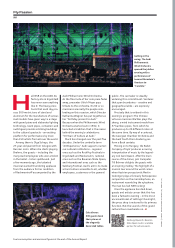 93
93 -
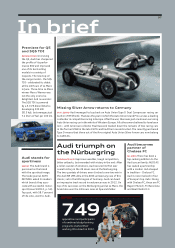 94
94 -
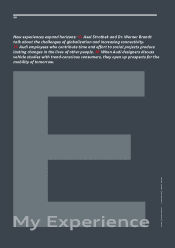 95
95 -
 96
96 -
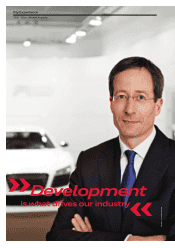 97
97 -
 98
98 -
 99
99 -
 100
100 -
 101
101 -
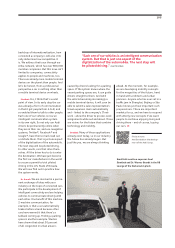 102
102 -
 103
103 -
 104
104 -
 105
105 -
 106
106 -
 107
107 -
 108
108 -
 109
109 -
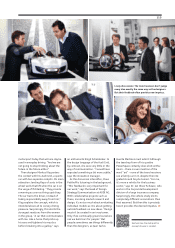 110
110 -
 111
111 -
 112
112 -
 113
113 -
 114
114 -
 115
115 -
 116
116 -
 117
117 -
 118
118 -
 119
119 -
 120
120 -
 121
121 -
 122
122 -
 123
123 -
 124
124 -
 125
125 -
 126
126 -
 127
127 -
 128
128 -
 129
129 -
 130
130 -
 131
131 -
 132
132 -
 133
133 -
 134
134 -
 135
135 -
 136
136 -
 137
137 -
 138
138 -
 139
139 -
 140
140 -
 141
141 -
 142
142 -
 143
143 -
 144
144 -
 145
145 -
 146
146 -
 147
147 -
 148
148 -
 149
149 -
 150
150 -
 151
151 -
 152
152 -
 153
153 -
 154
154 -
 155
155 -
 156
156 -
 157
157 -
 158
158 -
 159
159 -
 160
160 -
 161
161 -
 162
162 -
 163
163 -
 164
164 -
 165
165 -
 166
166 -
 167
167 -
 168
168 -
 169
169 -
 170
170 -
 171
171 -
 172
172 -
 173
173 -
 174
174 -
 175
175 -
 176
176 -
 177
177 -
 178
178 -
 179
179 -
 180
180 -
 181
181 -
 182
182 -
 183
183 -
 184
184 -
 185
185 -
 186
186 -
 187
187 -
 188
188 -
 189
189 -
 190
190 -
 191
191 -
 192
192 -
 193
193 -
 194
194 -
 195
195 -
 196
196 -
 197
197 -
 198
198 -
 199
199 -
 200
200 -
 201
201 -
 202
202 -
 203
203 -
 204
204 -
 205
205 -
 206
206 -
 207
207 -
 208
208 -
 209
209 -
 210
210 -
 211
211 -
 212
212 -
 213
213 -
 214
214 -
 215
215 -
 216
216 -
 217
217 -
 218
218 -
 219
219 -
 220
220 -
 221
221 -
 222
222 -
 223
223 -
 224
224 -
 225
225 -
 226
226 -
 227
227 -
 228
228 -
 229
229 -
 230
230 -
 231
231 -
 232
232 -
 233
233 -
 234
234 -
 235
235 -
 236
236 -
 237
237 -
 238
238 -
 239
239 -
 240
240 -
 241
241 -
 242
242 -
 243
243 -
 244
244 -
 245
245 -
 246
246 -
 247
247 -
 248
248 -
 249
249 -
 250
250 -
 251
251 -
 252
252 -
 253
253 -
 254
254 -
 255
255 -
 256
256 -
 257
257 -
 258
258 -
 259
259 -
 260
260 -
 261
261 -
 262
262 -
 263
263 -
 264
264 -
 265
265 -
 266
266 -
 267
267 -
 268
268 -
 269
269 -
 270
270 -
 271
271 -
 272
272 -
 273
273 -
 274
274 -
 275
275 -
 276
276 -
 277
277 -
 278
278 -
 279
279 -
 280
280 -
 281
281 -
 282
282 -
 283
283 -
 284
284 -
 285
285
 |
 |

backdrop of internationalization, how
connected a company is will also criti-
cally determine how competitive it
is. We address that issue through our
Ariba network, which has over 800,000
member companies. But this issue isn’t
limited to companies; connectivity
applies to people and machines, too.
There are already more mobile terminal
devices on the planet than people. And
let’s be honest, from a professional
perspective a car is nothing other than
a mobile terminal device on wheels.
Strotbek: Yes, I think that’s a valid
point of view. In its early days the car
was already a form of communication
in that it got people from A to B, and
so enabled them to talk to other people.
Each one of our vehicles is now an
intelligent communication system
in its own right. So not only can Audi
drivers be permanently online when
they are in their car, and use navigation
systems, Twitter®, Facebook® and
Google®, have their e-mails read out
or dictate them. That is just one aspect
of the digitalization of the automobile.
The next step will be piloted driving.
In other words, cars that drive them-
selves. All the driver has to do is enter
the destination. We have just become
the first car manufacturer in the world
to secure a permit to trial piloted
driving in the U.S. State of Nevada.
We will now find out in practice how
the system works.
Dr. Brandt: We are involved in a perma-
nent exchange of ideas with your
industry on the topic of connected cars.
We participate in the development of
intelligent connectivity and are helping
vehicles to communicate directly with
each other. One benefit of this machine -
2-machine communication, for
example, is that a car automatically
brakes before a bend because other
cars have warned it that there’s a
tailback coming up. Finding a parking
space is another example. Studies
have shown that about 30 percent
of all congestion in urban areas is
caused by drivers looking for a parking
space. If the system knows where the
vacant parking spaces are, it can guide
drivers straight to them. And with
the vehicle becoming increasingly a
mobile terminal device, it will soon
be
able to submit a sales representative’s
travel expenses claim automatically
and – linked to the company’s IT net-
work – allow the driver to process work
assignments while out and about. Those
are visions for the future that combine
technology and mobility.
Strotbek: Many of those applications
already exist today, so in our industry
the future has already begun. But
just like you, we are always thinking
ahead. At the moment, for example,
we are developing mobility concepts
for the megacities of the future, hand
in hand with architects and urban
planners. Anyone who has ever sat in a
trac jam in Shanghai, Beijing or São
Paulo knows just how important such
proposals are. Those are important
markets for us, and we have to respond
with utterly new concepts if we want
people to continue enjoying living and
driving there – and of course, buying
our cars. «
“Each one of our vehicles is an intelligent communication
system. But that is just one aspect of the
digitalization of the automobile. The next step will
be piloted driving.” Axel Strotbek
Small talk next to a supercar: Axel
Strotbek and Dr. Werner Brandt in the R8
Lounge of the Neckarsulm plant.
Find out more:
Axel Strotbek on the develop-
ment of the Audi Group.
105
